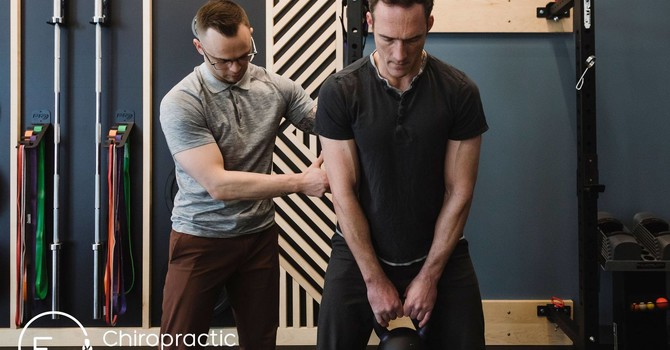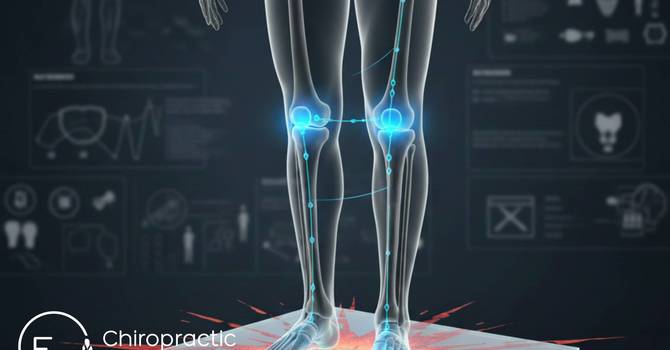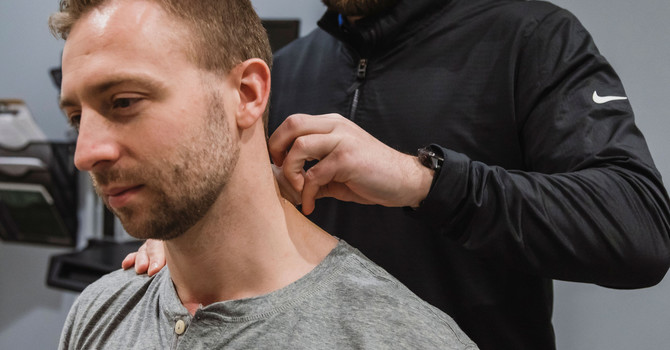
Lifting heavy objects is a part of everyday life, whether it’s carrying groceries, moving furniture, or loading weights at the gym. Unfortunately, improper lifting techniques can lead to serious back injuries, causing pain and long-term damage. As a trusted Saskatoon Chiropractor, E3 Chiropractic + Wellness is here to guide you on how to lift safely and avoid unnecessary strain on your spine.
Why Lifting Incorrectly Hurts Your Back
Your spine is designed to support movement, but improper lifting techniques can put excessive pressure on your vertebrae, discs, and surrounding muscles. When you bend forward incorrectly, you risk:
- Lumbar Strain – Overstretching or tearing muscles and ligaments in your lower back.
- Herniated Discs – Excessive pressure can cause the discs between your vertebrae to bulge or rupture.
- Spinal Misalignment – Poor form can shift your spine out of alignment, leading to chronic pain and discomfort.
- Understanding the right way to lift is essential for keeping your back healthy and pain-free.
The Wrong Way to Lift Heavy Objects
Many people make common mistakes when lifting, leading to injuries that could have been prevented. Here are some of the most frequent lifting errors:
Bending at the Waist Instead of the Knees
a) When you bend at the waist, your lower back bears most of the weight, increasing the risk of strain.
b) This position can cause excessive stress on the spinal discs, leading to pain or even disc herniation.
Twisting While Lifting
a) Rotating your torso while carrying a heavy load increases the chance of injuring spinal discs and ligaments.
b) Twisting motions should always be avoided when handling heavy objects.
Holding the Load Too Far from Your Body
a)Keeping an object away from your torso forces your muscles to work harder, increasing strain on the lower back.
b) The farther the load is from your center of gravity, the greater the stress on your spine.
Lifting Too Quickly and Jerking Movements
a) Sudden movements can cause a muscle strain or ligament sprain, especially if the weight is too heavy.
b) Controlled, steady movements are the safest approach.
Ignoring Core Engagement
a) Your core muscles provide stability to your spine. Lifting without engaging your core weakens support and increases injury risk.
The Right Way to Lift Heavy Objects
To avoid back injuries and maintain proper spinal health, follow these safe lifting techniques:
Start with a Stable Stance
- Stand with your feet shoulder-width apart to maintain balance.
- Position yourself close to the object before attempting to lift.
Bend Your Knees, Not Your Back
- Squat down by bending at the knees and hips while keeping your back straight.
- Keep your chest up and shoulders back to maintain good posture.
Keep the Object Close to Your Body
- Hold the load as close to your torso as possible to reduce strain on your lower back.
- This helps distribute the weight evenly and minimizes stress on your spine.
Lift with Your Legs, Not Your Back
- Push through your heels and engage your leg muscles (quadriceps and glutes) to lift the object.
- Avoid using only your lower back, as it is not designed to bear heavy loads on its own.
Engage Your Core
- Tighten your abdominal muscles to provide spinal stability and support.
- A strong core acts as a natural brace to protect your lower back from excessive strain.
Move Slowly and Avoid Twisting
- Use controlled movements when lifting or setting down an object.
- Pivot with your feet instead of twisting your spine when changing direction.
Use Proper Equipment if Needed
- When lifting very heavy objects, use tools like dollies, lifting straps, or ask for assistance.
- If working in a warehouse or job site, wearing a supportive belt may help reduce strain.
How E3 Chiropractic + Wellness Can Help
If you have experienced back pain due to improper lifting, a professional assessment from a Saskatoon Chiropractor can help restore proper spinal function and prevent further injury. At E3 Chiropractic + Wellness, we offer:
- Spinal Adjustments – Realigning the spine to relieve pain and improve movement.
- Corrective Exercises – Strengthening core muscles to enhance stability and prevent future injuries.
- Postural Guidance – Teaching proper lifting techniques and ergonomic practices for daily activities.
Preventative Tips for Long-Term Back Health
Even if you lift correctly, incorporating these habits can further protect your spine:
- Stay Active – Regular exercise keeps your muscles strong and flexible.
- Stretch Before Lifting – Warming up reduces stiffness and enhances mobility.
- Maintain a Healthy Weight – Extra weight increases strain on the spine.
- Hydrate and Eat Well – Proper nutrition supports muscle and joint health.
Conclusion
Lifting heavy objects is unavoidable in daily life, but back injuries don’t have to be. By following proper lifting techniques, engaging your core, and seeking chiropractic care when needed, you can protect your spine and stay pain-free. If you’ve experienced back pain from lifting or want to learn more about injury prevention, E3 Chiropractic + Wellness is here to help.
Click HERE to book a free discovery call today to learn how our expert team can support your spinal health and overall well-being!





